How Cacti, Hobby Gardening and Fruit Stands Inspired These Designers
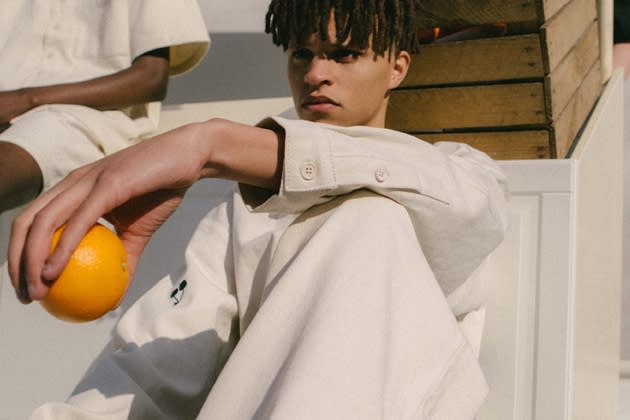
The gardening movement is making its way into fashion.
Several emerging designers, including Santos by Mónica, Bram’s Fruit and Unsent Studio, are forming the entire identity of their brands around nature, using plants as muses for croc-like creations like the “Monstera Mule.” The lines also center cactus leather as the material of choice, and use gardening slogans for marketing hype.
More from WWD
WWD spoke to two emerging designers, Puerto Rican native and New York-based Mónica Santos Gil (Santos by Mónica) and Dutch designer Bram Korsten (Bram’s Fruit), on what plant kinship means for their brands, and why it’s something to watch in sustainable fashion.
Based in the Netherlands, Korsten lives his brand: growing apples, pears and raspberries in his garden and using seemingly mundane activities, such as mowing the lawn, as inspirations for recent collections.
Prices range from 24.95 euros for classic bandanas, 59.95 euros for gardening T-shirts bearing a minimalist “F*ck off, I’m gardening” slogan to 269.95 euros for heavyweight pieces like canvas jackets. Many pieces are ethically produced in Portugal, with Turkey and China also covering some of the production footprint. Others are also made in the Netherlands, although Korsten confessed local production isn’t always a stamp for sustainability, and it’s something he’s still navigating. He said fabric research has been a big part of his sustainability journey, with heavyweight cotton, and certifications like GOTS on his priority list.
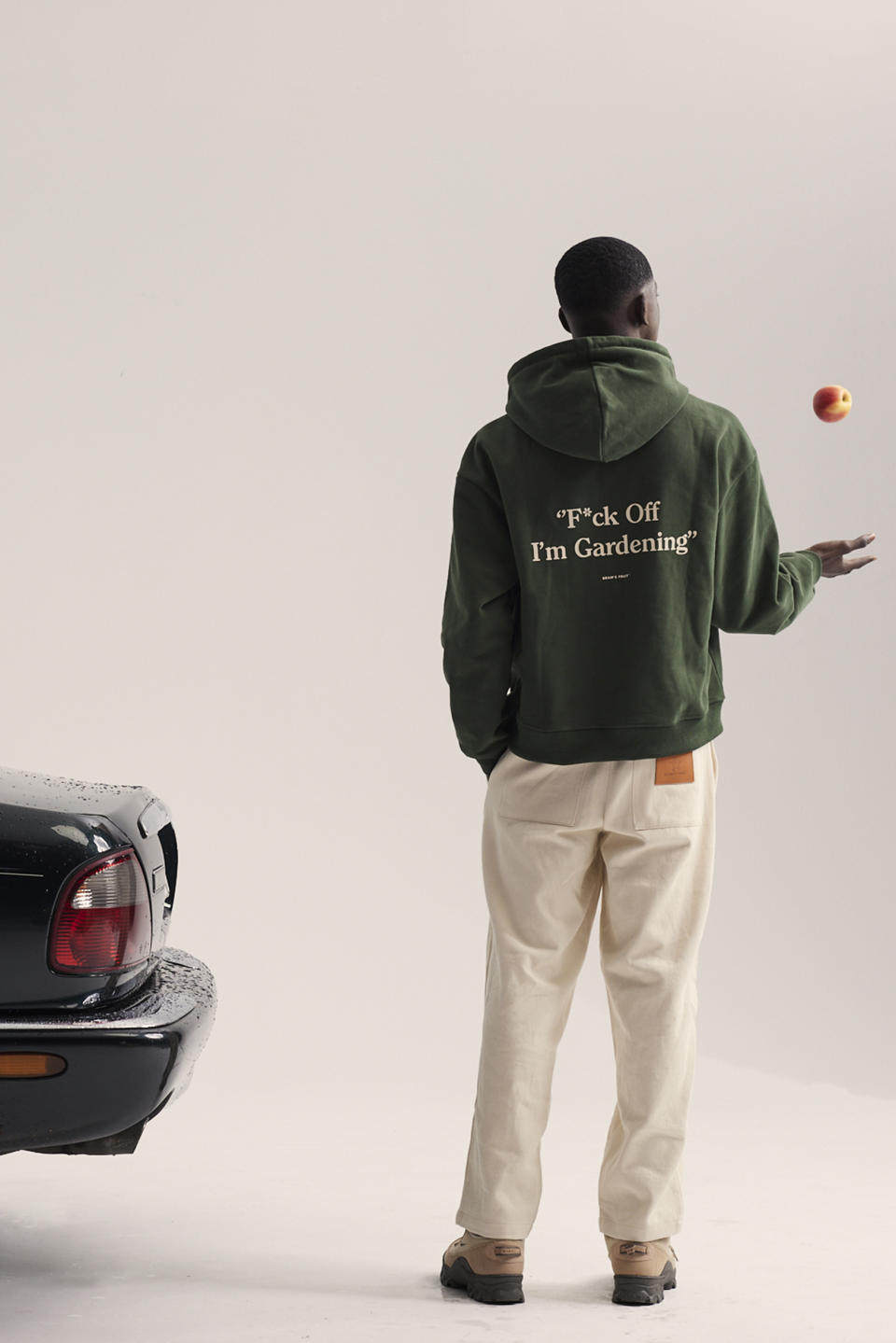
“I am eager to become as sustainable as possible with our production process. We are learning about this every day. I also truly believe that Bram’s Fruit garments are future classics, the idea that our clothes will be worn in the next decades is a goal in itself.”
As for how nature shaped the design conversation, Korsten said it goes back to his upbringing in the Netherlands where farming is ingrained into the culture. “My parents always told me to value people and the small things in life. Especially the positive effects of nature in particular. I am trying to push forward those lessons through the brand.”
Who is wearing the future classics?
Korsten said it’s for the youth in spirit. “I’m super happy with the current customer base,” he said. “All of them are young people — in terms of a young mind or age — and experimental with their style. In my belief, they value the heavy qualities and long-lasting fabrics. I get physical letters from some clients who are thanking me for the clothes. That is kind of crazy but truly appreciated.”
Along with the cheeky slogan shirts and hoodies, there are twill shirts, shorts and pants and vests in neutral palettes (perhaps signaling green as the new neutral).
Although Korsten isn’t interested in shows just yet, he said this fall season will be the most complete collection to date and full of color and organic forms. Showing off a tailored coat with amoeba-like pockets via Zoom, he affirmed: “It’s the best collection so far…I think we show that Bram’s Fruit is here to stay and we cannot wait to show all of the new creations.”
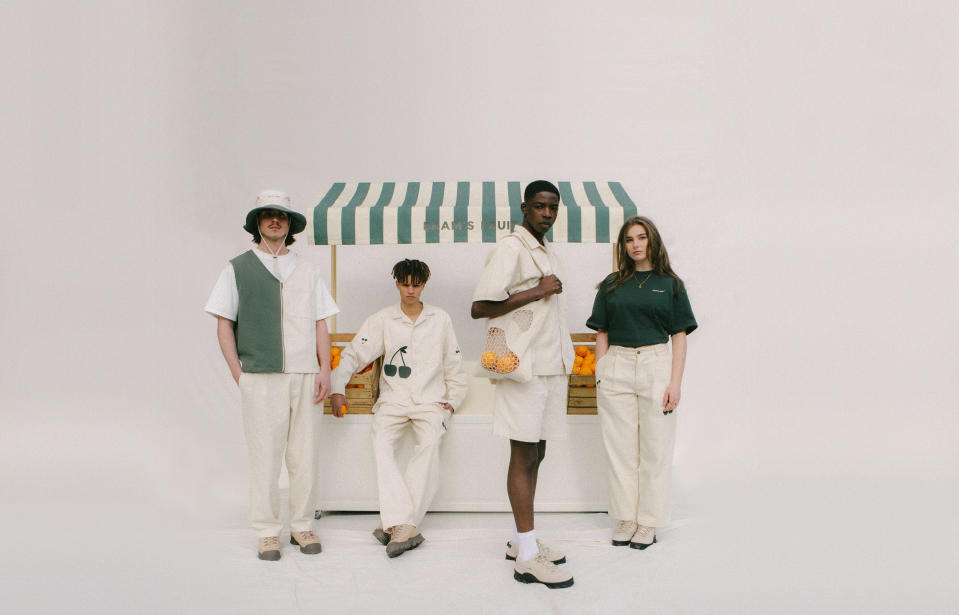
Meanwhile, it’s a one-woman show on Ludlow Street in Manhattan’s Lower East Side where Mónica Santos Gil, designer behind the eponymous Santos by Mónica, keeps extending the length of her summer pop-up because her cactus bags have drawn such a crowd.
The temporary sign in front of the shop simply read: “Cactus leather bags,” in a bid for curious shopper’s attention.
It worked, as consumers and designers alike have been wooed by new materials.
“This world to me did not exist at all. I launched online and got a lot of positive feedback and sales within five minutes. Now that I have that store — it’s four times that energy,” she told WWD. Emerging designers (who keep all their own profits) also share floorspace in her pop-up including names like Ruth Projects (colorful bucket hats) and Lucca House (affordable New York-made furniture).
Prior to founding her label, Gil clocked five years in industry at names like Coach, Urban Outfitters and Dolls Kill. At her height with the San Francisco fast-fashion retailer, she was designing upward of several handbag tech packs a day. She pledged to do things differently — much slower — with her own label, stoking her growing affinity for materials.
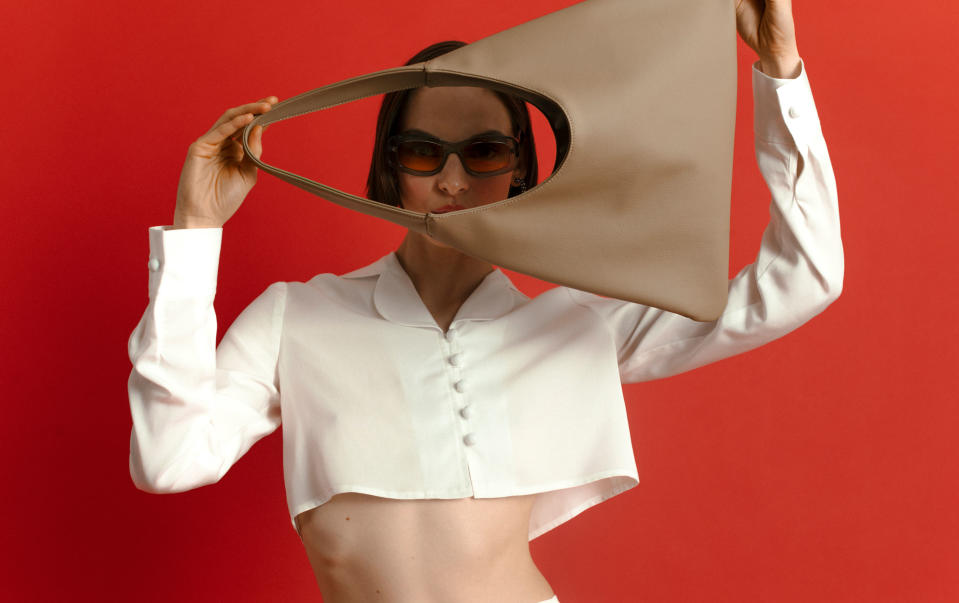
And cactus leather would be her muse.
Founded amid the pandemic, Santos by Mónica is known for its oblong cactus leather bags in “timeless, long-lasting and simple — but not too simple” shapes, in the designer’s words. Today, the bags are made with a majority cactus leather (although the manufacturer or composition breakdown wasn’t disclosed) with a 100 percent organic cotton fabric lining. Previous versions were a cotton-poly blend.
Ranging from $215 to $375, the handbags (six styles in all) are batch-made in Brooklyn and feature the least amount of cuts possible, or anywhere from two to four cuts per bag. The brand operates with only 15 percent waste.
“My goal with the bags is to make them as simple as possible — and timeless…I try to make the styles I have as functional as possible. I got to the point where I might design two more bags — maybe a backpack and an East-West tote, but I don’t think I’m going to design any more handbags because that’s the whole point of being a sustainable brand. I don’t want to keep adding to the world if it’s not needed. I wanted to touch on every handbag style someone would wear, so the work bag, the everyday bag, the going out bag. I feel like I got to the point where I don’t need to add any more, and I’m trying to build that with the clothing as well.”
As for other sustainability callouts, all hangtags are made of plantable seed paper, shipping boxes are corrugated cardboard, tissue is recyclable and polybags have bio-based origins. Any text is printed with soy-based inks. Furthermore, the bags are dyed with natural dye and hardware is locally sourced in the Garment District. For more structured styles like the Amelia, the bag features additional elements like a reinforced wood-pulp textile handle.
Earlier this year, the brand launched a six-piece line of clothing made of cotton and Tencel as another celebration of core materials made of cellulosic or plant-based origins. Eventually, Gil dreams of creating her own plant-based material that anyone can use.
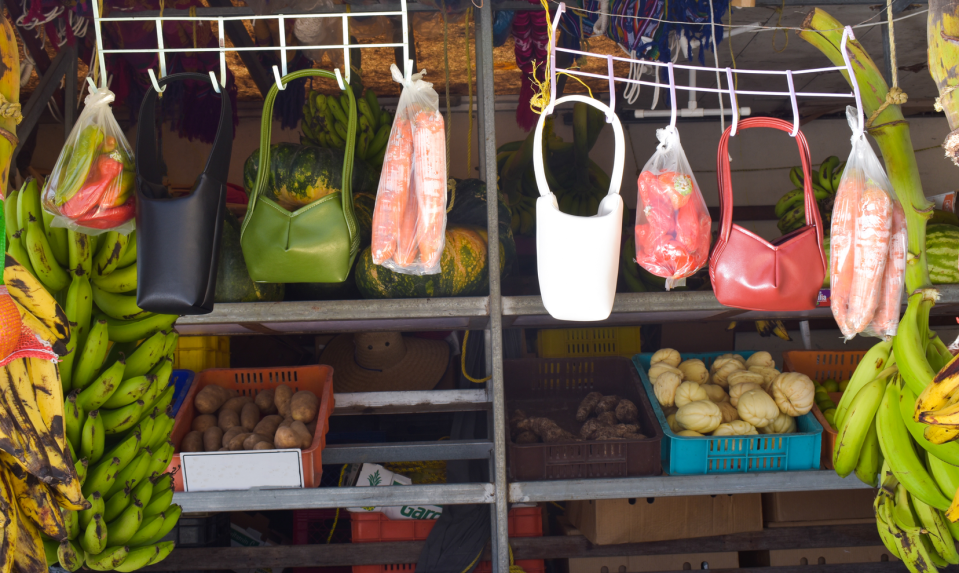
Sign up for WWD's Newsletter. For the latest news, follow us on Twitter, Facebook, and Instagram.

